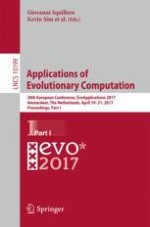2017 | OriginalPaper | Chapter
Brain Programming and the Random Search in Object Categorization
Authors : Gustavo Olague, Eddie Clemente, Daniel E. Hernández, Aaron Barrera
Published in: Applications of Evolutionary Computation
Publisher: Springer International Publishing
Activate our intelligent search to find suitable subject content or patents.
Select sections of text to find matching patents with Artificial Intelligence. powered by
Select sections of text to find additional relevant content using AI-assisted search. powered by
